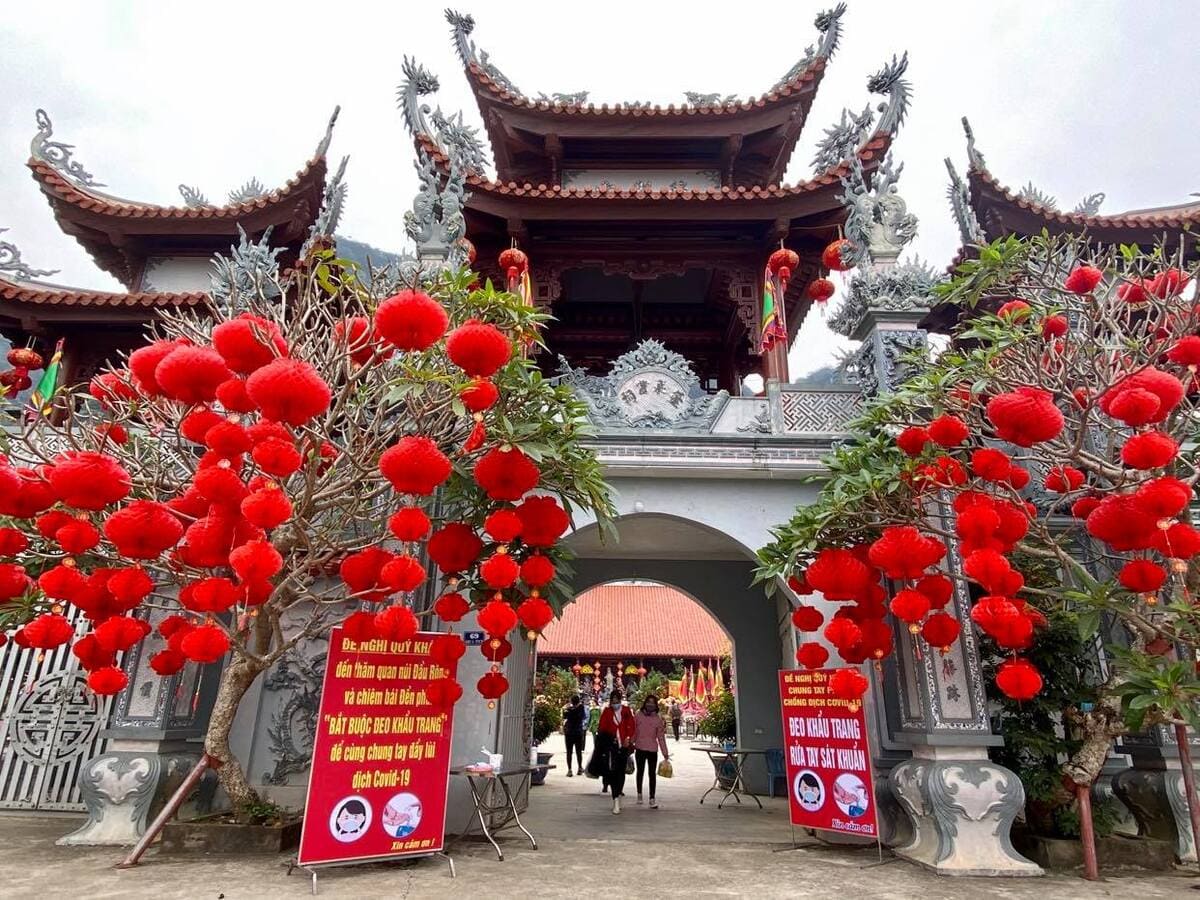
(HBO) - Though Cao Phong, like other districts of Hoa Binh, has cancelled annual festivals in response to COVID-19, tourist attractions and religious sites remain open in the district to welcome visitors.
.jpg) Visitors to Bong Lai Temple comply with COVID-19 preventive rules.
Visitors to Bong Lai Temple comply with COVID-19 preventive rules.
Hoang Thi Van, a resident in Dan Chu ward, Hoa Binh city, always visits Bong
Lai Temple in Cao Phong on the first days of the New Lunar Year.
She said unlike previous years, the temple was quiet this year because of few
visitors. People were not allowed to go inside the temple, instead they could
only offer incense to pray for luck and peace at the entrance, she said, adding
that free masks and hand sanitiser were provided at the entrance while the
temple operator regularly reminded visitors of adhering to COVID-19 prevention
rules via loudspeakers.
Passenger ship services in Thung Nai were reopened on the third day of lunar
January to serve visitors to Ba Chua Thac Bo Temple. One of the ship owners
said as COVID-19 prevention regulations ban gatherings of many people, all
ships here only let onboard a small number of passengers and strictly complied
with COVID-19 preventive regulations, including only receiving local visitors,
and getting passengers to wear masks and use hand sanitiser.
Bui Anh Tuan, Vice Chairman of the district’s People’s Committee, said Cao
Phong has rigorously enforced measures to prevent the spread of the novel
coronavirus, including cancellation of various cultural, sports and tourism
events and strict penalties handed down to violators.
It has also called on the locals to avoid mass gatherings, practice distancing,
disinfect their houses, install the contact tracing app Bluezone, voluntarily
complete health declarations, and others, he noted.
Home to a number of renowned religious sites, such as the temples of Ba Chua
Thac Bo, Bong Lai and Dong Son, and the pagodas of Khanh and Quen Ang, Cao
Phong is one of the most popular tourist destinations in Hoa Binh on the
occasion of the Lunar New Year.
According to its division for culture and sports, visitor arrivals to local
religious sites during the Lunar New Year 2021 were only equivalent to 20
percent of last year’s figure./.
A diverse chain of eco-tourism and resort destinations concentrated in Hoa Binh city and the districts of Tan Lac, Da Bac, and Luong Son… Along with the launch of several key high-quality resort tourism projects, these developments have reshaped the landscape and enhanced the appeal of Hoa Binh as a travel destination.
Boasting diverse terrain, a mild climate, and rich natural resources, Cao Phong district is increasingly asserting its place on Vietnam’s tourism map, attracting both domestic and foreign visitors. The district is renowned for its stunning landscapes, majestic mountains, a crystal-clear hydropower lake, and the unique cultural identity of local ethnic groups.
With its pristine landscapes, unique cultural heritage of Muong ethnic minority, and an expanding range of visitor experiences, Tan Lac district of Hoa Binh has fast become a captivating destination for both domestic and international tourists.
Until now, Sung village in Cao Son commune, Da Bac district remains the only Dao ethnic community in Hoa Binh province to develop a community-based tourism model. Beyond its untouched natural landscapes, cultural identity serves as the cornerstone attraction for visitors.
Alongside the diverse cultural identities of the Kinh, Muong, Tay, Thai, Dao, and Mong ethnic people, Hoa Binh province is also renowned as the "capital" of the northwestern Vietnamese cuisine, offering unique and distinctive dishes. At festivals, during Lunar New Year (Tet), or on significant family or community occasions, special dishes are prepared, leaving a lasting impression on visitors.
A Phong Linh (Yellow Tabebuia) flower garden in Thang village, Thach Yen commune, Cao Phong district is currently in full bloom, drawing a large number of visitors.



.jpg) Visitors to Bong Lai Temple comply with COVID-19 preventive rules.
Visitors to Bong Lai Temple comply with COVID-19 preventive rules.